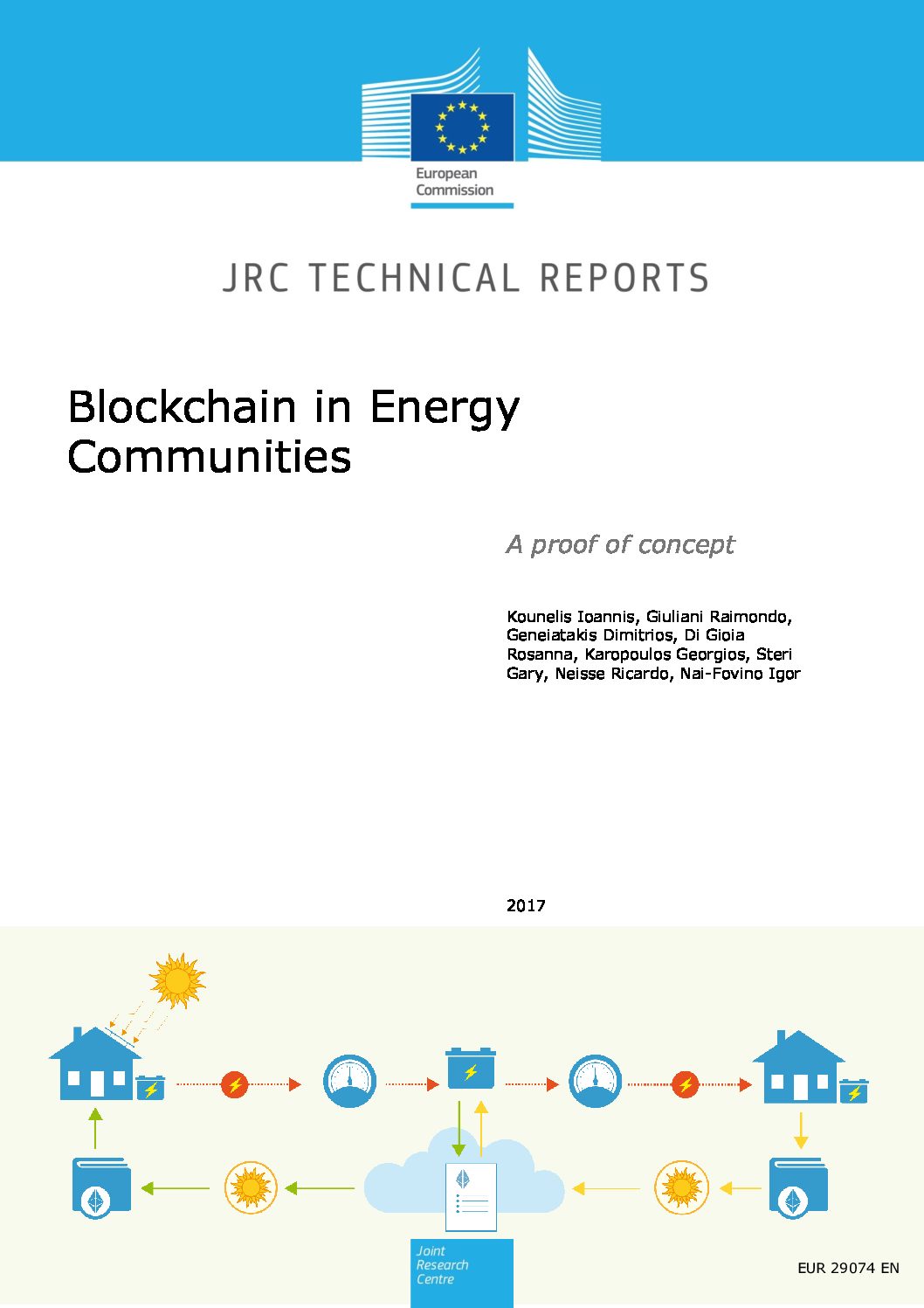Micro-generation is the capacity for consumers to produce electrical energy in-house or in a local community. The concept of “market” indicates the possibility of trading the electricity that has been micro-generated among producers and consumers, where a user acting both as a producer and consumer is called a “prosumer”. Traditionally, this market has been served by pre-defined bilateral agreements between prosumers and retail energy suppliers. This means that until now, electricity-generating prosumers have not had real access to the energy market, which remains a privileged playing field for the institutionalised energy suppliers. This fact has, so far, heavily impacted on the real diffusion at large scale of micro-generation due to the limited economic advantages this energy generation approach would bring to the prosumers.
Indeed, the main options considered so far by the technical literature, were completely centralised and their viability (under a prosumer perspective) was in general challenged as they introduce additional management fees and costs and assume the intervention of a trusted third party reducing once again the potential gains of end-users. New approaches should be developed enabling end-users to have free access to the energy market. In this context the advent of distributed ledgers, i.e., blockchains, can be considered beneficial.
In particular, the use of a blockchain for energy representation and exchange provides several advantages. First of all, it gives the possibility to have a trusted and decentralised direct exchange between two parties. No intermediaries or third parties are needed in order to fulfil transactions. The data on the blockchain are public, easily verifiable by interested parties, consistent, and always available. Even if the data are available, the users remain pseudonymous, as for the transactions blockchain addresses and not personal data are used. Moreover, due to their decentralised nature and therefore lack of a central point of failure, blockchains are very resistant to denial of service attacks. Finally, data on the blockchain are immutable, meaning that once inserted in the blockchain it cannot be altered, providing therefore a reliable point of reference. By having these features, blockchain provides a trusted technology that can be used as an Information and Communication Technology (ICT) backbone for an open energy market.
According to our approach, self-generated electricity could normally be either consumed within the house, accumulated in batteries for later use, or simply given back to the grid, where, thanks to the distributed and pervasive nature of the blockchain, the produced energy could be redeemed elsewhere. For example, when charging an electric vehicle abroad, or sold through the blockchain to the best buyer, according to a mechanism similar to that of a stock-exchange market.
Exploiting the potentialities of blockchains and distributed ledgers, in this report we propose a solar energy production and distribution architecture that uses smart contracts to support automatic and distributed energy exchange, thus allowing the development of an energy micro-generation market more open and fruitful, from an end-user perspective. More in detail we introduce a platform named Helios that facilitates microgenerators to exchange energy freely in a limited geographical area. In this setup a custom made Internet of Things (IoT) smart meter is used to account and register the micro-generated energy in the blockchain, while the smart contract supports the monitoring and accounting of energy exchange in terms of a financial transaction. The model has been implemented and validated through an in-house developed test-bed composed by a real physical energy infrastructure and the related control and ICT layers. To the best of our knowledge, Helios is among the first solutions built on off the shelf devices and open source technologies, enabling prosumers to access the energy market.
The rest of the report is organised as follows: in chapter 2 we introduce to the reader the concept of the blockchain technology by briefly describing how it works and what advantages it has. In chapter 3 we discuss the people’s perception of an energy community. We first explain what a community is and then go deeper in the notion of virtual communities and what the motivations for joining a community are. In this section we also analyse how people perceive the use of blockchains as a means of payment and as a technology in general. In chapter 4 we describe our prosumer energy model and the different ways energy exchange can be achieved. In chapter 5 we explain how the hardware infrastructure can be built by describing our own implementation on top of which we have based our energy model. In chapter 6 we describe in detail our own proposal of the Helios Coin. We explain all the components that are necessary for it to properly function, including the application logic. In chapter 7 we discuss the privacy and security issues that a smart home may encounter. To do so we list all the possible threats and attacks that could be performed in such a system. In chapter 8 we list the related work. Finally, in chapter 9 we conclude our report and discuss possible topics for future work.
